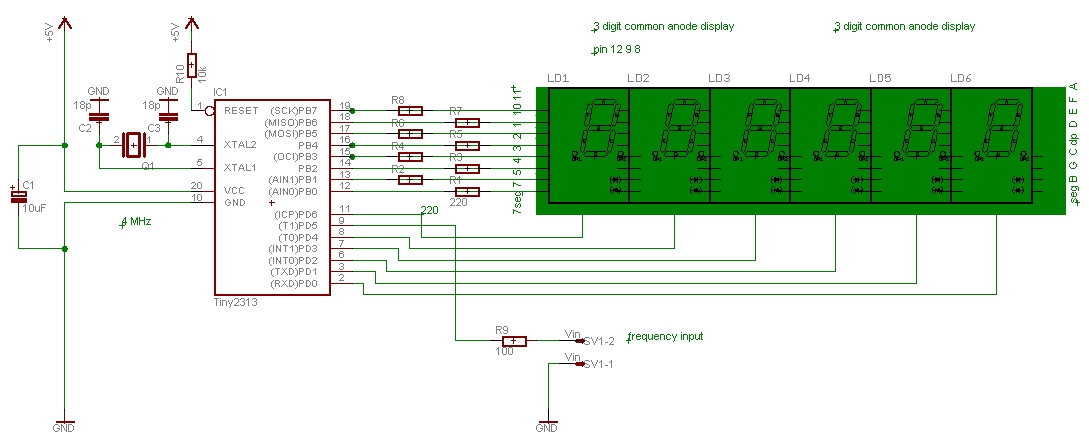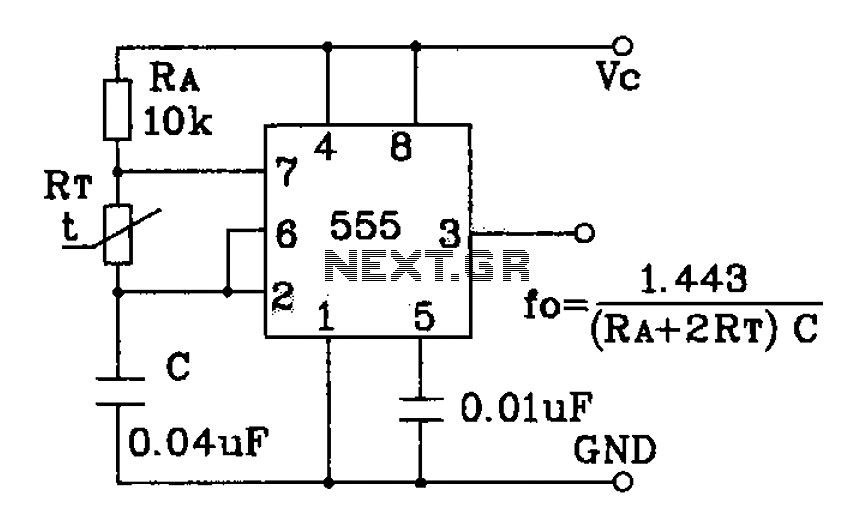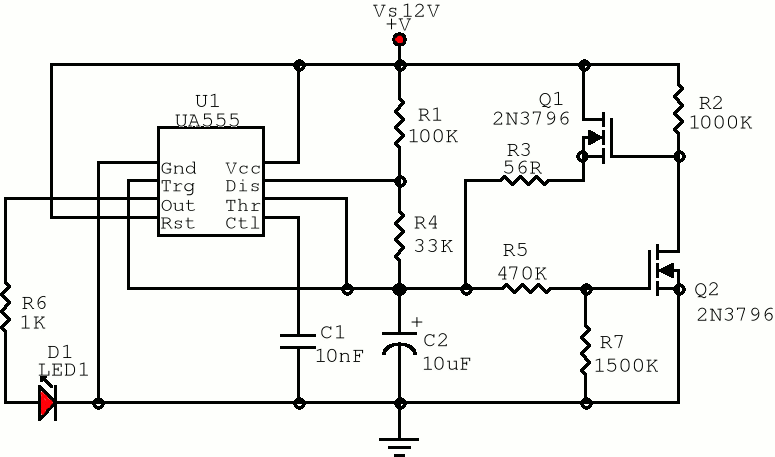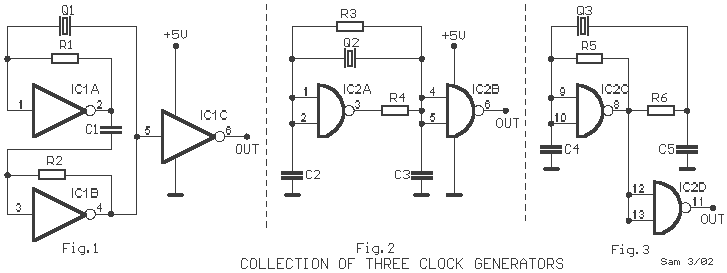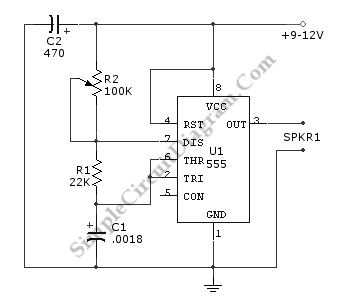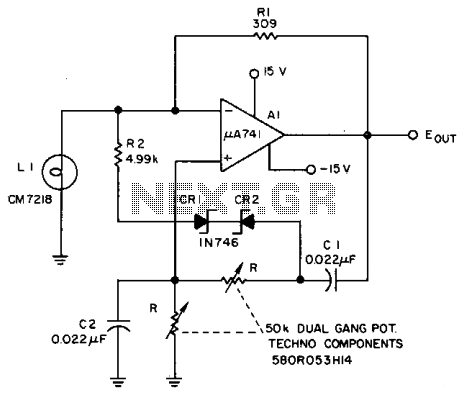
Adjustable High/Low Frequency Sine wave generator
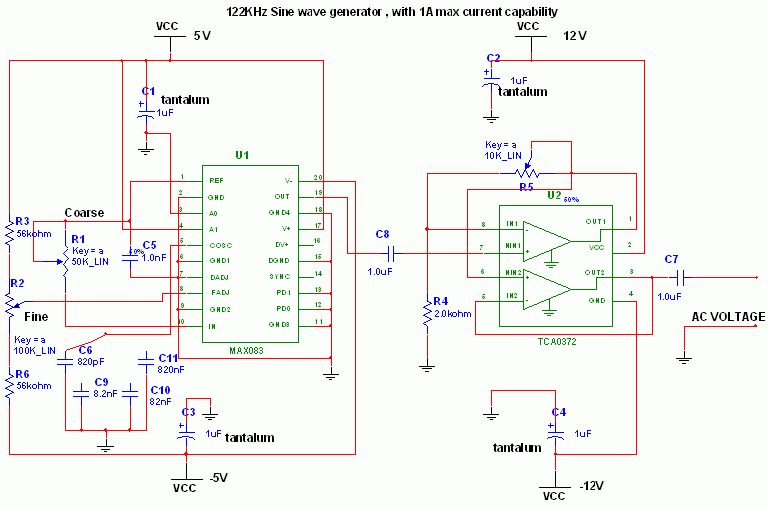
This circuit utilizes the versatile MAX038 function generator. While some advanced features of this integrated circuit (IC) are disabled in this configuration, it is capable of generating sine, triangle, and square waves by adjusting the A0 and A1 pins, as detailed in the datasheet. A switch can be employed for generating other waveforms. The selected frequency of 122 kHz is chosen for use in an ESR meter designed to monitor the health of electrolytic capacitors, which must discharge tens of amperes in less than 2 milliseconds. At 122 kHz, capacitive reactance is low, and inductive reactance is not significantly high, allowing for a current (e.g., 200 mA, using a precision resistor) to flow through a capacitor while measuring the AC voltage drop across it to estimate the equivalent series resistance (ESR) using the formula Vdrop/current. Although inductive and capacitive reactance are present, their effects are negligible. The MAX038 IC generates a 122 kHz, 2 V peak-to-peak sine wave, with frequency calculated using the formula Freq (MHz) = Iin (µA) / C6 (pF). Here, Iin = 2.5 V / R1 (25 kΩ default), resulting in a frequency of 0.122 MHz. The resistor allows for minor adjustments, with a recommendation not to set it below 10 kΩ or above 40 kΩ to maintain accuracy. For multi-frequency operation, a multiposition switch can be used with capacitors of 820 pF, 8.2 nF, 82 nF, and 820 nF for the 122 kHz range, as well as for 12.2 kHz, 1.22 kHz, and 122 Hz ranges. Fine-tuning of the frequency can be accomplished by adjusting R2, allowing the frequency to vary from 1.7x (Vfadj = -2.4) to 0.3x (Vfadj = 2.4) of the main frequency when the fadj is set to 0 V. The sine wave output is fed into a TCA0372 operational amplifier (op-amp) configured as a non-inverting amplifier to achieve a gain ranging from 1 to 5 (2 V peak-to-peak to 10 V peak-to-peak), which can be adjusted using a potentiometer. This output is then passed to a TCA0372 buffer stage, also part of the same IC. Frequency adjustments necessitate the use of a frequency counter, making this circuit suitable for operation in conjunction with such a device. The maximum current rating is 1 A; however, it is advisable to limit the current to 0.5 A for improved accuracy. The circuit requires a computer power supply providing 12 V, 5 V, -5 V, -12 V, and ground connections. If a computer power supply is unavailable, a multi-voltage mains transformer (15 watts is sufficient) along with diode bridges (rated for low current at 1-2 A), smoothing capacitors (10,000 µF, 16 V), and voltage regulators such as the LM7905 and LM7912 can be employed.
The MAX038 function generator is a highly integrated circuit that allows for the generation of a variety of waveforms with high precision and stability. In this design, the circuit has been tailored to focus on generating sine waves at specific frequencies, which is critical for accurately measuring the ESR of capacitors. The choice of a 122 kHz frequency is particularly effective for this application, as it minimizes the impact of reactance on the measurements.
The operational amplifiers used in this circuit, specifically the TCA0372, are essential for signal conditioning. The first op-amp stage amplifies the sine wave output from the MAX038, allowing for better detection of small voltage drops across the capacitor under test. The gain can be adjusted to accommodate varying capacitor sizes and conditions, ensuring that the output remains within the operational limits of the subsequent stages.
The implementation of a multiposition switch for frequency selection enhances the versatility of the circuit, allowing it to be used for a range of testing scenarios beyond just the 122 kHz frequency. This feature makes the ESR meter adaptable for different capacitor types and applications, providing a more comprehensive tool for capacitor health monitoring.
Power supply considerations are crucial for the stable operation of the circuit. The specified voltage levels ensure that the MAX038 and TCA0372 operate within their optimal ranges, preventing distortion in the generated waveforms. The use of smoothing capacitors and voltage regulators further stabilizes the power supply, reducing noise that could affect measurement accuracy.
In summary, this circuit design leverages the capabilities of the MAX038 function generator and TCA0372 op-amps to create an effective ESR meter. It is engineered for flexibility, accuracy, and ease of use, making it a valuable tool for anyone needing to assess the condition of electrolytic capacitors in various electronic applications.This circuit uses the versatile MAX038 function generator. Although in this circuit some of the advanced characteristics of this IC are disabled, you can generate Sine, Triangle, Square waves (adjusting A0 and A1 pins see datasheet on if you want other waves, use a switch). I selected this particular frequency (122 Khz) because i needed a cheapo ESR-o-meter for my electrolytic capacitors to monitor their health as they have to discharge tens of amperes in less than 2 ms. At 122 KHz capacitive reactance is very low, and inductive reactance isn`t so high, so forcing a current (es 200mA, using a precision resistor) through a capacitor and reading AC voltage drop accross it gives me an estimation of ESR (Vdrop/current).
Of course inductive and capacitive reactance are still present, but negligible. The 122 khz 2V p-p sine wave is generated by the MAX038 IC, its frequency can be calculated by the formula Freq (MHz) = Iin(uA) / C6 (pf). Iin = 2, 5V / R1 (25Kohm default). So the freq is 0, 122 MHz. The resistor is for small adjustments, don`t go under 10000 Kohm or above 40000 Kohm because the accuracy will drop.
If you want multifrequency just use the multiposition switch with 820 pF, 8, 2 nF, 82nF, 820 nf for 122Khz range 12, 2Khz range 1220 Hz and 122 Hz. Fine tuning can be done adjusting R2, the frequency can vary from 1, 7x (Vfadj = -2, 4) to 0, 3x (Vfadj = 2, 4) of the main frequency (when fadj is at 0V).
The sine wave output is feed into a TCA0372 1/2 opamp to achieve a gain from 1 to 5 (2V p-p, 10 V p-p), adjust the potenziometer and into a TCA0372 2/2 opamp buffer stage also present on the same IC. Adjusting the frequency needs a frequency counter, so this circuit should be used on conjunction with a freq couter.
The max current is 1A, but i would suggesto to not go above 0, 5A to remain accurate. Needs a computer power supply with 12V, 5V, -5V, -12V, GND to be operated, if you don`t have one just use a multivoltage mains transformer (15 watt is enough) diode bridges (low current 1-2 Amps), smoothing capacitors 10000uF 16V, and voltage regulators such as LM7905 and LM7912. 🔗 External reference
The MAX038 function generator is a highly integrated circuit that allows for the generation of a variety of waveforms with high precision and stability. In this design, the circuit has been tailored to focus on generating sine waves at specific frequencies, which is critical for accurately measuring the ESR of capacitors. The choice of a 122 kHz frequency is particularly effective for this application, as it minimizes the impact of reactance on the measurements.
The operational amplifiers used in this circuit, specifically the TCA0372, are essential for signal conditioning. The first op-amp stage amplifies the sine wave output from the MAX038, allowing for better detection of small voltage drops across the capacitor under test. The gain can be adjusted to accommodate varying capacitor sizes and conditions, ensuring that the output remains within the operational limits of the subsequent stages.
The implementation of a multiposition switch for frequency selection enhances the versatility of the circuit, allowing it to be used for a range of testing scenarios beyond just the 122 kHz frequency. This feature makes the ESR meter adaptable for different capacitor types and applications, providing a more comprehensive tool for capacitor health monitoring.
Power supply considerations are crucial for the stable operation of the circuit. The specified voltage levels ensure that the MAX038 and TCA0372 operate within their optimal ranges, preventing distortion in the generated waveforms. The use of smoothing capacitors and voltage regulators further stabilizes the power supply, reducing noise that could affect measurement accuracy.
In summary, this circuit design leverages the capabilities of the MAX038 function generator and TCA0372 op-amps to create an effective ESR meter. It is engineered for flexibility, accuracy, and ease of use, making it a valuable tool for anyone needing to assess the condition of electrolytic capacitors in various electronic applications.This circuit uses the versatile MAX038 function generator. Although in this circuit some of the advanced characteristics of this IC are disabled, you can generate Sine, Triangle, Square waves (adjusting A0 and A1 pins see datasheet on if you want other waves, use a switch). I selected this particular frequency (122 Khz) because i needed a cheapo ESR-o-meter for my electrolytic capacitors to monitor their health as they have to discharge tens of amperes in less than 2 ms. At 122 KHz capacitive reactance is very low, and inductive reactance isn`t so high, so forcing a current (es 200mA, using a precision resistor) through a capacitor and reading AC voltage drop accross it gives me an estimation of ESR (Vdrop/current).
Of course inductive and capacitive reactance are still present, but negligible. The 122 khz 2V p-p sine wave is generated by the MAX038 IC, its frequency can be calculated by the formula Freq (MHz) = Iin(uA) / C6 (pf). Iin = 2, 5V / R1 (25Kohm default). So the freq is 0, 122 MHz. The resistor is for small adjustments, don`t go under 10000 Kohm or above 40000 Kohm because the accuracy will drop.
If you want multifrequency just use the multiposition switch with 820 pF, 8, 2 nF, 82nF, 820 nf for 122Khz range 12, 2Khz range 1220 Hz and 122 Hz. Fine tuning can be done adjusting R2, the frequency can vary from 1, 7x (Vfadj = -2, 4) to 0, 3x (Vfadj = 2, 4) of the main frequency (when fadj is at 0V).
The sine wave output is feed into a TCA0372 1/2 opamp to achieve a gain from 1 to 5 (2V p-p, 10 V p-p), adjust the potenziometer and into a TCA0372 2/2 opamp buffer stage also present on the same IC. Adjusting the frequency needs a frequency counter, so this circuit should be used on conjunction with a freq couter.
The max current is 1A, but i would suggesto to not go above 0, 5A to remain accurate. Needs a computer power supply with 12V, 5V, -5V, -12V, GND to be operated, if you don`t have one just use a multivoltage mains transformer (15 watt is enough) diode bridges (low current 1-2 Amps), smoothing capacitors 10000uF 16V, and voltage regulators such as LM7905 and LM7912. 🔗 External reference
